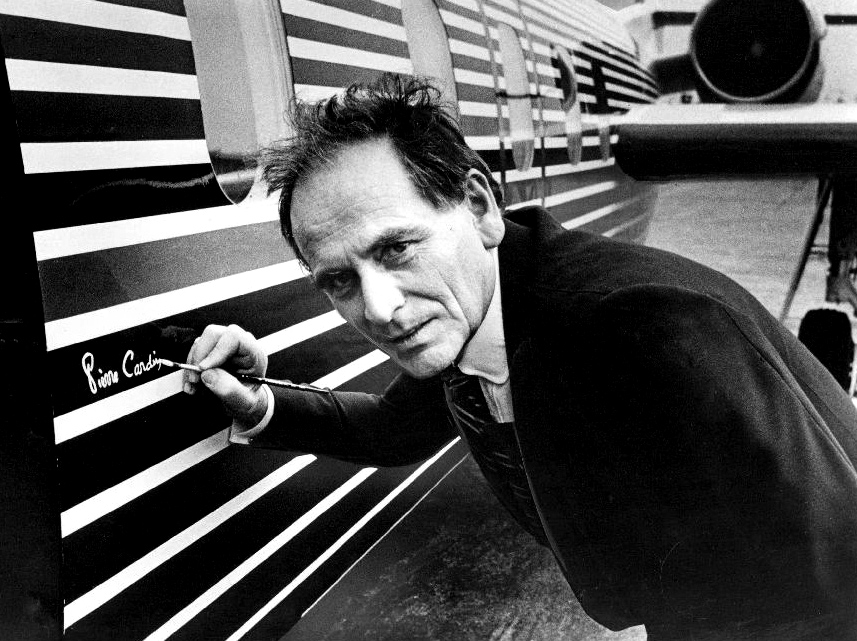
On Tuesday, December 29, 2020, the French Academy of Fine Arts officially confirmed the death of renowned Italian-French designer Pierre Cardin. He was 98 years old. The cause of death was not reported, though his family verified his death was at the American Hospital in Neuilly-sur-Seine. Cardin was known as one of the most influential and ubiquitous designers and artists of his time, particular during the 1960s. His work has spawned imitators the fashion world over, and inspired retrospective exhibitions around the globe.
Born in 1922, Cardin got his start in the industry apprenticing for fashion houses like Paquin and designing menswear for Christian Dior before founding his own house in the late 1940s. He would go on to show collections out of his own workshop in France, and became synonymous with several style that were mostly untrodden at the time. Inspired by the Space Race and new technological advances of the 60s, Cardin heavily explored the realms of futurist and Space Age design. He adorned models in spacesuits and helmets, imagining what fashion would look like in a future era. Emblematic of his work will always be his geometric and architectural touches, including the use of unconventional materials to create sharp and jagged structures.
Cardin was one of the first designers to strike significant business in both Japan and China, consistently showing his collections overseas. He dressed models, stars and politicians from the likes of Mia Farrow, Jacqueline Kennedy, Raquel Welch and countless others, and made a huge name for himself in the ready-to-wear sector, particularly with his menswear and unisex collections.

It is hard to point to any specific product that Cardin was known for. The designer famously stamped his brand on absolutely everything, from garments to cars to bedsheets, with little regard for what specific items were considered upscale or chic or cool. If it piqued his interest, he slapped his name on it, and we all watched as his work took over the entire 1960s. As he once remarked to Fashion columnist Eugenia Sheppard:
“Fashion is not enough. I don’t want to just be a designer.”
Cardin famously told The Times in a 1987 interview: “I was born an artiste, but I am a businessman.” And of course, we all remember Cardin for his iconic bubble dresses and uniquely forward-facing style, but while aesthetic trends come and go, business savvy lasts. Cardin’s fascination with licensing his name might seem today in the spirit of greedy ultra-capitalism, but in reality, at the time when such a practice was less common, Cardin used it to make an artistic statement. Nothing was too humble or too luxe for the Cardin brand, and everything from furniture to clocks adorned his logo. In essence, Cardin wanted us to know that fashion need not be an elitist culture; it was for everyone, and more importantly a brand does not need to be tied down to a single identity. Rather, its widespread nature and willingness to be omnipresent is identity in itself.
Cardin even brought a unique perspective to fashion regarding the human body. To him, the garment was the most important piece of the equation, the woman modeling it was almost superfluous. He wanted the art front and center. In many ways this is the progenitor to the body-positive movement of more recent fashion pundits; focus on the clothing, not the idealized body type of the model.
We need more designers like Cardin, not only to visualize what the future of fashion could look like, but to shake up the formula when it comes to the business side of the industry. Cardin’s blind eye towards genre, his disregard for what items would make him seem less couture or too commercial, made him a household name for both he high and the low brow. No product was too humble for him, and along with his iconic ready-to-wear sensibilities, he brought fashion to the masses without sacrificing the essence of couture. Cardin always sought to break the mold, and he succeeded so well that he created a new one entirely. He was a marketing genius as much as he was an artist in every sense of the word, and pioneered the now standard practice of name licensing. Every name brand after him owes credit.


